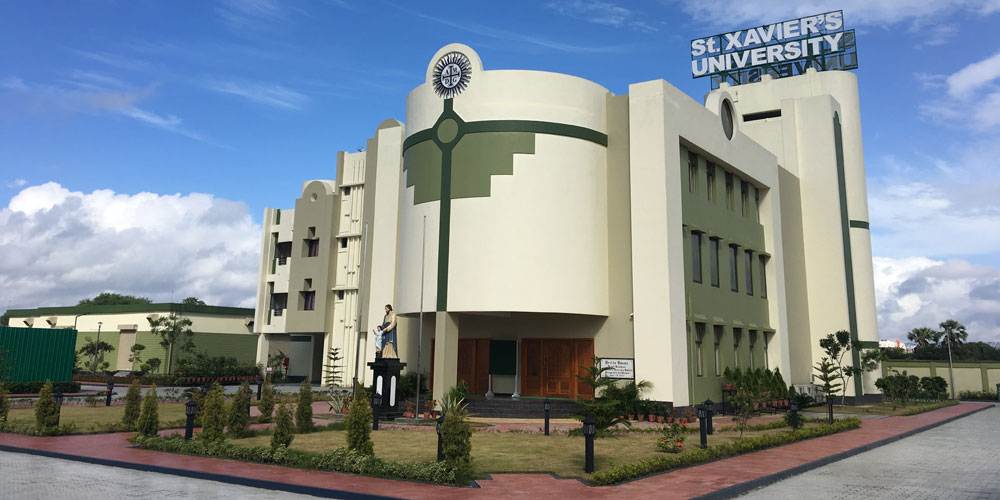Fundamentals of business analytics (Record no. 4674)
[ view plain ]
| 000 -LEADER | |
|---|---|
| fixed length control field | 05044nam a22002177a 4500 |
| 005 - DATE & TIME | |
| control field | 20190813111408.0 |
| 008 - FIXED-LENGTH DATA ELEMENTS--GENERAL INFORMATION | |
| fixed length control field | 190813b xxu||||| |||| 00| 0 eng d |
| 020 ## - ISBN | |
| International Standard Book Number | 9788126563791 |
| Price | 769 |
| 040 ## - CATALOGING SOURCE | |
| Original cataloging agency | S.X.U.K |
| 041 ## - Language | |
| Language | English |
| 082 ## - DDC NUMBER | |
| Classification number | R 658.4 PRA(FUN)Ed2 |
| 100 ## - MAIN ENTRY--PERSONAL NAME | |
| Personal name | Prasad, R.N |
| 245 ## - TITLE STATEMENT | |
| Title | Fundamentals of business analytics |
| Statement of responsibility | R.N Prasad; Seema Acharya |
| 250 ## - EDITION STATEMENT | |
| Edition statement | 2nd ed. |
| 260 ## - PUBLICATION, DISTRIBUTION, ETC. (IMPRINT) | |
| Place of publication, distribution, etc | New Delhi |
| Name of publisher, distributor, etc | Wiley |
| Date of publication, distribution, etc | c2016 |
| 300 ## - PHYSICAL DESCRIPTION | |
| Pages | xxiii;403 |
| Other Details | P.B |
| 500 ## - GENERAL NOTE | |
| General note | 1 Business View of Information Technology Applications<br/><br/>1.1 Business Enterprise Organization, Its Functions, and Core Business Processes<br/><br/>1.2 Baldrige Business Excellence Frameworks (Optional Reading)<br/><br/>1.3 Key Purpose of using IT in Business<br/><br/>1.4 The Connected World: Characteristics of Internet-Ready IT Applications<br/><br/>1.5 Enterprise Applications (ERP/CRM, etc.) and Bespoke IT Applications<br/><br/>1.6 Information Users and Their Requirements<br/><br/> <br/><br/>2 Types of Digital Data<br/><br/>2.1 Introduction<br/><br/>2.2 Getting into “GoodLife” Database<br/><br/>2.3 Getting to Know Structured Data<br/><br/>2.4 Getting to Know Unstructured Data<br/><br/>2.5 Getting to Know Semi-Structured Data<br/><br/>2.6 Difference between Semi-Structured and Structured Data<br/><br/> <br/><br/>3 Introduction to OLTP and OLAP<br/><br/>3.1 OLTP (On-Line Transaction Processing)<br/><br/>3.2 OLAP (On-Line Analytical Processing)<br/><br/>3.3 Different OLAP Architectures<br/><br/>3.4 OLTP and OLAP<br/><br/>3.5 Data Models for OLTP and OLAP<br/><br/>3.6 Role of OLAP Tools in the BI Architecture<br/><br/>3.7 Should OLAP be Performed Directly on Operational Databases?<br/><br/>3.8 A Peek into the OLAP Operations on Multidimensional Data<br/><br/>3.9 Leveraging ERP Data Using Analytics<br/><br/> <br/><br/>4 Getting Started with Business Intelligence<br/><br/>4.1 Using Analytical Information for Decision Support<br/><br/>4.2 Information Sources Before Dawn of BI?<br/><br/>4.3 Definitions and Examples in Business Intelligence, Data Mining, Analytics, Machine Learning, Data Science<br/><br/>4.4 Looking at “Data” from Many Perspectives<br/><br/>4.5 Business Intelligence (BI) Defined<br/><br/>4.6 Why BI? How Can You Achieve Your Stated Objectives?<br/><br/>4.7 Some Important Questions About BI - Where, When and What<br/><br/>4.8 Evolution of BI and Role of DSS, EIS, MIS, and Digital Dashboards<br/><br/>4.9 Need for BI at Virtually all Levels<br/><br/>4.10 BI for Past, Present, and Future<br/><br/>4.11 The BI Value Chain<br/><br/>4.12 Introduction to Business Analytics<br/><br/> <br/><br/>5 BI Definitions and Concepts<br/><br/>5.1 BI Component Framework<br/><br/>5.2 Who is BI for?<br/><br/>5.3 BI Users<br/><br/>5.4 Business Intelligence Applications<br/><br/>5.5 BI Roles and Responsibilities<br/><br/>5.6 Best Practices in BI/DW<br/><br/>5.7 The Complete BI Professional<br/><br/>5.8 Popular BI Tools<br/><br/> <br/><br/>6 Basics of Data Integration<br/><br/>6.1 Need for Data Warehouse<br/><br/>6.2 Definition of Data Warehouse<br/><br/>6.3 What is a Data Mart?<br/><br/>6.4 What is then an ODS?<br/><br/>6.5 Ralph Kimball’s Approach vs. W.H. Inmon’s Approach<br/><br/>6.6 Goals of a Data Warehouse<br/><br/>6.7 What Constitutes a Data Warehouse?<br/><br/>6.8 Extract, Transform, Load<br/><br/>6.9 What is Data Integration?<br/><br/>6.10 Data Integration Technologies<br/><br/>6.11 Data Quality<br/><br/>6.12 Data Profiling<br/><br/> <br/><br/>7 Multidimensional Data Modeling<br/><br/>7.1 Introduction<br/><br/>7.2 Data Modeling Basics<br/><br/>7.3 Types of Data Model<br/><br/>7.4 Data Modeling Techniques<br/><br/>7.5 Fact Table<br/><br/>7.6 Dimension Table<br/><br/>7.7 Typical Dimensional Models<br/><br/>7.8 Dimensional Modeling Life Cycle<br/><br/> <br/><br/>8 Measures, Metrics, KPIs and Performance Management<br/><br/>8.1 Understanding Measures and Performance<br/><br/>8.2 Measurement System Terminology<br/><br/>8.3 Navigating a Business Enterprise, Role of Metrics and Metrics Supply Chain<br/><br/>8.4 “Fact-Based Decision Making” and KPIs<br/><br/>8.5 KPI Usage in Companies<br/><br/>8.6 Where do Business Metrics and KPIs Come From?<br/><br/>8.7 Connecting the Dots: Measures to Business Decisions and Beyond<br/><br/> <br/><br/>9 Basics of Enterprise Reporting<br/><br/>9.1 Reporting Perspectives Common to All Levels of Enterprise<br/><br/>9.2 Report Standardization and Presentation Practices<br/><br/>9.3 Enterprise Reporting Characteristics in OLAP World<br/><br/>9.4 Balanced Scorecard<br/><br/>9.5 Dashboards<br/><br/>9.6 How Do You Create Dashboards?<br/><br/>9.7 Scorecards vs. Dashboards<br/><br/>9.8 The Buzz behind Analysis…<br/><br/> <br/><br/>10 Understanding Statistics<br/><br/>10.1 Role of Statistics in Analytics<br/><br/>10.2 Data, Data Description and Summarization<br/><br/>10.3 Statistical Tests<br/><br/>10.4 Understanding Hypothesis and t-Test<br/><br/>10.5 Correlation Analysis<br/><br/>10.6 Regression<br/><br/>10.7 ANOVA<br/><br/>10.8 The F-Test<br/><br/>10.9 Time Series Analysis<br/><br/> <br/><br/>11 Application of Analytics<br/><br/>11.1 Application of Analytics<br/><br/>11.2 Analytics in Industries<br/><br/>11.3 Widely Used Application of Analytics<br/><br/> <br/><br/>12 Data Mining Algorithms<br/><br/>12.1 Association Rule Mining<br/><br/>12.2 k-Means Clustering<br/><br/>12.3 Decision Tree<br/><br/> <br/><br/>13 BI Road Ahead<br/><br/>13.1 Understanding BI and Mobility<br/><br/>13.2 BI and Cloud Computing<br/><br/>13.3 Business Intelligence for ERP Systems<br/><br/>13.4 Social CRM and BI<br/><br/> <br/><br/>Unsolved Exercises<br/><br/>Glossary<br/><br/>Index<br/><br/> |
| 650 ## - Subject | |
| Subject | FUNDAMENTALS OF BUSINESS ANALYTICS |
| 700 ## - Added Entry Personal Name | |
| Relator Code | auth. |
| Added Entry Personal Name | Acharya, Seema |
| 942 ## - ADDED ENTRY ELEMENTS (KOHA) | |
| Koha item type | Reference |
| Withdrawn status | Lost status | Source of classification or shelving scheme | Damaged status | Not for loan | Koha collection | Location (home branch) | Sublocation or collection (holding branch) | Shelving location | Date acquired | Source of acquisition | Cost, normal purchase price | Serial Enumeration / chronology | Koha full call number | Barcode (Accession No.) | Koha date last seen | Copy Number | Price effective from | Koha item type |
|---|---|---|---|---|---|---|---|---|---|---|---|---|---|---|---|---|---|---|
| Dewey Decimal Classification | Not For Loan | Reference | St. Xavier's University, Kolkata | St. Xavier's University, Kolkata | Reference Section | 08/09/2019 | Bharat | 769.00 | S.X.U.K | R 658.4 PRA(FUN)Ed2 | UM239 | 08/13/2019 | 938 | 08/13/2019 | MBA Referance |

